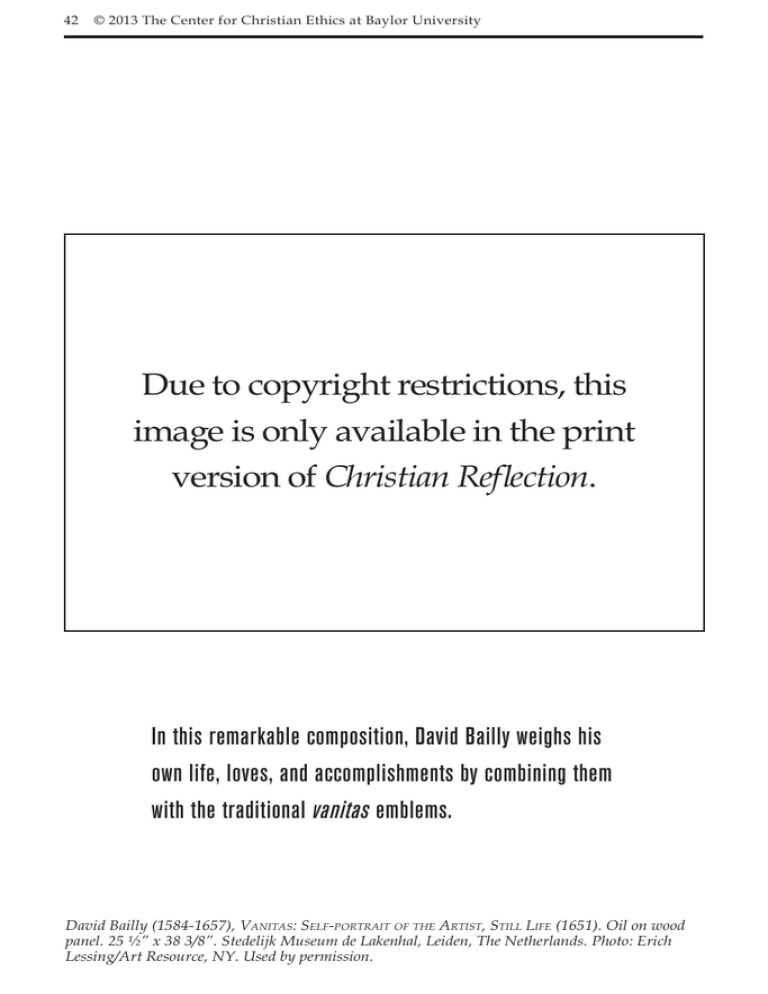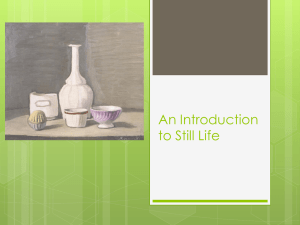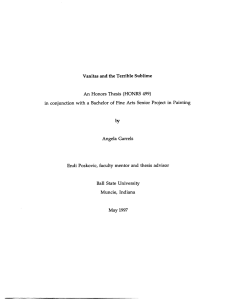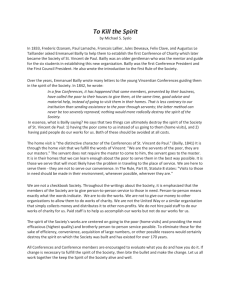Due to copyright restrictions, this image is only
advertisement

42 © 2013 The Center for Christian Ethics at Baylor University Due to copyright restrictions, this image is only available in the print version of Christian Reflection. In this remarkable composition, David Bailly weighs his own life, loves, and accomplishments by combining them with the traditional vanitas emblems. David Bailly (1584-1657), Vanitas: Self-portrait of the Artist, Still Life (1651). Oil on wood panel. 25 ½” x 38 3/8”. Stedelijk Museum de Lakenhal, Leiden, The Netherlands. Photo: Erich Lessing/Art Resource, NY. Used by permission. All My Life Is Vanity 43 All My Life Is Vanity B y D H e idi J . H o r n i k avid Bailly is generally considered the father of vanitas still-life painting in Leiden, The Netherlands, even though he was almost exclusively a portraitist at the beginning of his career.1 Through an analysis of Vanitas: Self-portrait of the Artist, Still Life, art historian Naomi Popper-Voskuil has established that Bailly’s contribution to Dutch painting was creating a vanitas composition that fused self-portraiture and still life. Artists continued to blend the vanitas still-life tradition (the depiction of objects that symbolize the meaninglessness of earthly life and the transient nature of earthly goods) with self-portraiture into the eighteenth century. The iconographic program of Bailly’s painting is complex and original in how it combines figure and still-life to depict the transience of life and the necessity of death. Here is one example of the image’s originality: it incorporates a large number of art objects (sculptures, drawings, paintings) among the vanitas emblems, including portraits of the artist and his wife. The artist is shown seated as a young man who holds with his left hand a portrait of himself as a middle-aged man (painted in 1642), though Bailly was actually sixty-seven years old at the time he signed and dated this work in 1651. Thus the painting becomes something like a self-portrait within a self-portrait. Popper-Voskuil notes that the medallion of the young woman is not the original companion-piece to the 1642 self-portrait, but rather an idealized image of Bailly’s young bride Agneta van Swanenburgh.2 These details suggest that Bailly is not depicting a transitory moment in his life, but is reviewing the artistic works completed through his lifetime. This is how the artist wanted to be remembered after his death. Bailly presents the figure of his younger self sitting at a table, but not in his studio or engaged in some creative or intellectual activity as was common in the earlier self-portraiture tradition. The figure looks at the viewer directly, drawing us to examine the various objects in the room that create the vanitas theme of the composition. In his right hand he holds an instrument of his trade, a maulstick. Several other items—for example, the skull, hourglass, extinguished candle, books, and rolled up paper—are traditional vanitas emblems to indicate the passing of time and inevitable decline in a person’s life. It was common in the sixteenth century for self-portraitists to depict a single moment in their life, and include the skull as a warning. But Bailly 44 Death Due to copyright restrictions, this image is only available in the print version of Christian Reflection. Artist Unknown, Vanitas (seventeenth century). Exhibition Asnieres, Seine 1991. Photo: Alfredo Dagli Orti/The Art Archive at Art Resource, NY. Used by permission. defies expectations. His composition is based on the more complex thought of the entire process of human life summarized through his own fate: if we take the heart of the painting to be the 1642 self-portrait, then behind the artist stands his own youth (and his companion in life, portrayed in her youth) and in front of him is death (in the form of the skull). The table holds objects that symbolize his worldly achievements and wealth, while at the far end of it, as a summary of his life’s experience, is a parchment which says “Vanitas Vanitum et Omnis Vanitas, David Bailly pinxit A[nn]o 1651.”3 This combines an allusion to Ecclesiastes 1:2b (“Vanity of vanities, all is vanity”) with the artist’s signature for the painting. Bailly is at a crossroads, trying to preserve his life through his painting, yet both his youthful and middleaged selves have become elements in a nature morte (literally “nature dead,” or still life). Perhaps he is suggesting the futility of an artist’s achievement given the the transience of human life. All My Life Is Vanity 45 A flute-glass (representing the pleasure of drinking) divides the artworks on the table, with the two-dimensional works on the left and three-dimensional works on the right. Other vanitas symbols on the table refer specifically to the life enjoyed by artists and the cultured literati of Holland: the musical instruments (flute and lute), silver boxes (for remedy and jewelry), and roses (living and dead).4 The three soap bubbles are emblematic of the fragility and brevity of life. Bailly’s originality stands in vivid contrast to more traditional vanitas compositions like the one by an unknown French artist of the seventeenth century which is illustrated here (p. 44). That composition is simply a still-life composed of various objects representing worldly enjoyments (the jewelry, music, musical instruments, globe, and sculptures) with two symbols of death (the skull and extinguished candle) prominently placed in the foreground center. This vanitas still life invokes our contemplation of life’s fleeting pleasures and the inevitability of death. It is direct and universal. Yet it cannot resonate with us in a personal way as Bailly’s image does. Bailly reveals to viewers his own life, loves, and accomplishments in combination with the traditional vanitas emblems. NOTEs 1 N. Popper-Voskuil, “Self-portraiture and Vanitas Still-Life Painting in 17th-century Holland in Reference to David Bailly’s Vanitas Oeuvre,” Pantheon 31 (January, 1973), 58-74. 2 Ibid., 63. 3 Ibid., 65. 4 For further discussion of theories related to the terracotta bust, the grisaille drawings on the wall and in the background, and the statue of the Christian martyr St. Sebastian (died c. 288), see Popper-Voskull, 67-68. Heidi j. Hornik is Professor of Art History at Baylor University in Waco, Texas.




